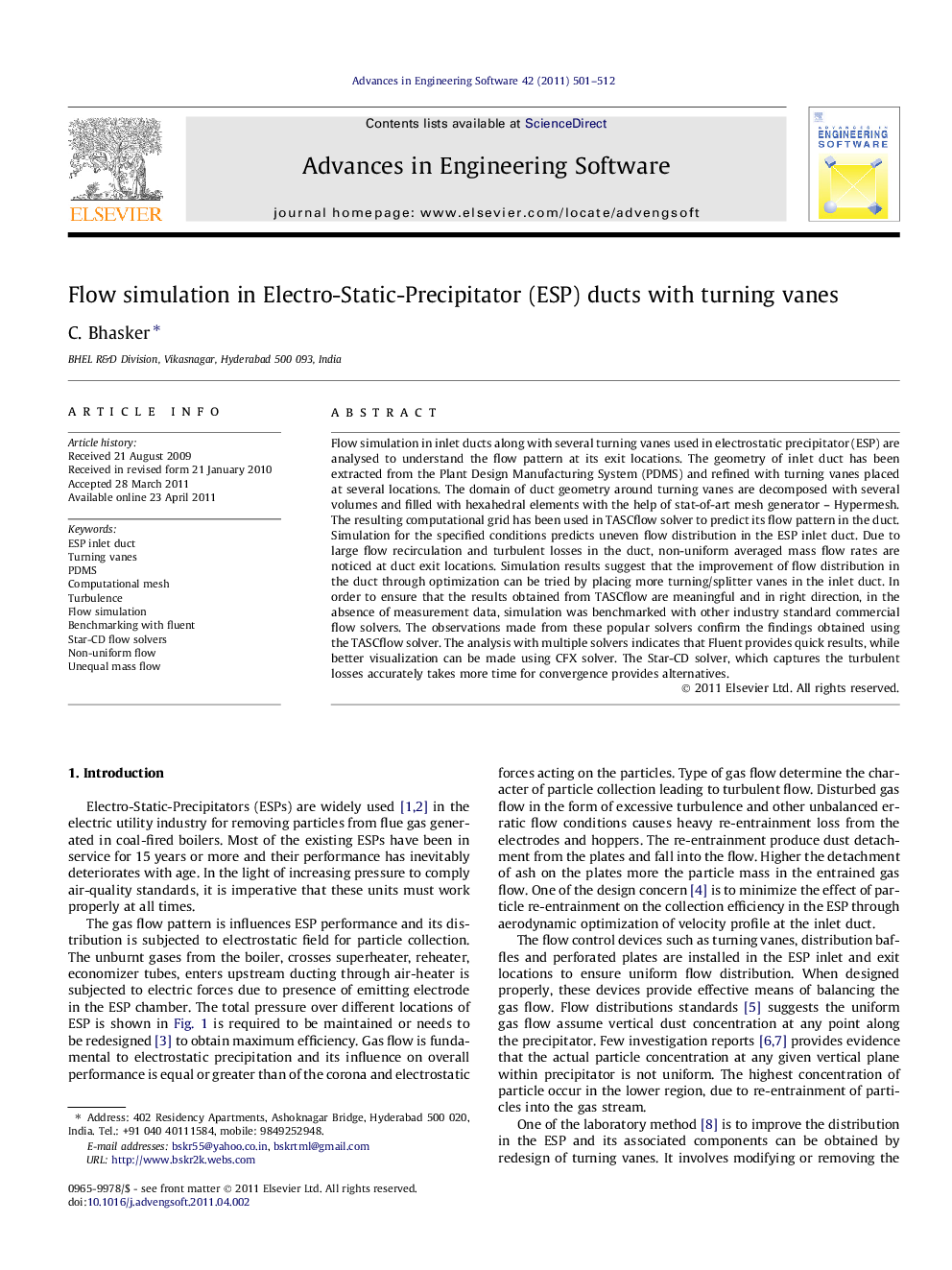| کد مقاله | کد نشریه | سال انتشار | مقاله انگلیسی | نسخه تمام متن |
|---|---|---|---|---|
| 569676 | 876683 | 2011 | 12 صفحه PDF | دانلود رایگان |

Flow simulation in inlet ducts along with several turning vanes used in electrostatic precipitator (ESP) are analysed to understand the flow pattern at its exit locations. The geometry of inlet duct has been extracted from the Plant Design Manufacturing System (PDMS) and refined with turning vanes placed at several locations. The domain of duct geometry around turning vanes are decomposed with several volumes and filled with hexahedral elements with the help of stat-of-art mesh generator – Hypermesh. The resulting computational grid has been used in TASCflow solver to predict its flow pattern in the duct. Simulation for the specified conditions predicts uneven flow distribution in the ESP inlet duct. Due to large flow recirculation and turbulent losses in the duct, non-uniform averaged mass flow rates are noticed at duct exit locations. Simulation results suggest that the improvement of flow distribution in the duct through optimization can be tried by placing more turning/splitter vanes in the inlet duct. In order to ensure that the results obtained from TASCflow are meaningful and in right direction, in the absence of measurement data, simulation was benchmarked with other industry standard commercial flow solvers. The observations made from these popular solvers confirm the findings obtained using the TASCflow solver. The analysis with multiple solvers indicates that Fluent provides quick results, while better visualization can be made using CFX solver. The Star-CD solver, which captures the turbulent losses accurately takes more time for convergence provides alternatives.
Journal: Advances in Engineering Software - Volume 42, Issue 7, July 2011, Pages 501–512